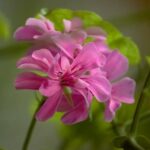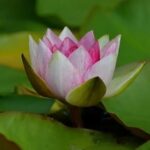Tropical garden layout design is an essential aspect of creating a stunning outdoor space that captures the essence of a tropical paradise. The lush foliage, vibrant flowers, and exotic appeal of tropical gardens have made them increasingly popular among homeowners and landscape enthusiasts. However, to achieve the desired aesthetic and functionality, it is crucial to understand the importance of proper layout design in these unique environments.
The appeal of tropical gardens lies in their ability to evoke a sense of tranquility and beauty, often resembling lush rainforests or idyllic island getaways. A well-executed layout design can enhance this ambiance while also providing practical elements such as comfortable seating areas, winding pathways, and captivating water features. Understanding how to effectively plan and arrange these components is key to achieving an authentic tropical garden experience.
In this article, we will delve into the various considerations and techniques involved in creating a successful tropical garden layout design. From understanding the influence of climate on plant selection to utilizing colors and textures for maximum impact, we will explore the essential elements that contribute to a thriving tropical garden. By following our insightful tips and guidelines, readers will be able to transform their outdoor spaces into breathtaking tropical oases that are both visually stunning and functional.
Understanding the Climate
Tropical climates are characterized by high temperatures and humidity, along with a distinct wet and dry season. These environmental factors greatly influence the design of tropical gardens.
The abundant sunlight and consistent warmth allow for an incredible diversity of plant life to thrive in this climate, providing gardeners with a wide array of options when it comes to landscaping. However, the heavy rainfall during the wet season can also pose challenges such as soil erosion and waterlogging, which must be taken into consideration when planning the layout of a tropical garden.
Incorporating native plants that are well-adapted to the specific conditions of a tropical climate is key to creating a successful garden layout. Plants such as hibiscus, orchids, bromeliads, and palms are popular choices for their ability to flourish in the warm and humid environment. Additionally, understanding the microclimates within your garden space – areas that receive more or less sunlight, or areas prone to water accumulation – is crucial for making informed decisions about plant placement and overall design.
The unique characteristics of tropical climates open up opportunities for creativity in garden layout design. In addition to selecting suitable plants, elements such as shade structures and irrigation systems should be considered in order to mitigate potential issues arising from the intense heat or heavy rainfall. By understanding the local climate and its impact on gardening practices, individuals can create beautiful tropical gardens that not only survive but thrive in their natural environment.
| Tropical Climate Factors | Influence on Garden Layout |
|---|---|
| High temperatures and humidity | Selection of plants that thrive in warm, humid conditions |
| Distinct wet and dry seasons | Consideration of water accumulation issues during wet season, irrigation systems |
| Abundant sunlight | Creative use of shade structures for plant protection |
Choosing the Right Plants
Tropical gardens are known for their lush and vibrant foliage, making the selection of suitable plants a crucial aspect of the layout design. When choosing plants for a tropical garden, it is essential to consider the specific needs and characteristics of the chosen species in order to create a thriving and visually appealing landscape.
One key factor to consider is the climate of the region, as different tropical plants have varying requirements when it comes to sunlight, water, and soil conditions.
Certain tropical plants thrive in humid environments with consistent rainfall, while others are better suited to drier conditions. Understanding these preferences is vital in ensuring that the selected plants will flourish in their intended environment. Additionally, considering the mature size of each plant is important to avoid overcrowding and ensure adequate spacing for optimal growth.
Incorporating a diverse range of plant species can contribute to creating a balanced and visually interesting garden landscape. This can include using a variety of heights, colors, and textures to add depth and dimension.
In addition to lush greenery, colorful flowers can also be used to enhance the overall aesthetic appeal of the garden. By carefully selecting an assortment of suitable tropical plants, gardeners can achieve a harmonious and thriving garden layout that reflects the beauty of a natural tropical environment.
| Aspect | Considerations |
|---|---|
| Climate | Humidity levels and rainfall patterns |
| Mature Size | Space requirements for optimal growth |
| Diversity | Variety in heights, colors, and textures |
Utilizing Color and Textures
Tropical gardens are known for their vibrant colors and varied textures, creating a visually stunning and lush environment. When designing a tropical garden layout, it is essential to understand the key elements that contribute to its appeal. Utilizing vibrant colors and varied textures is crucial in creating an authentic and visually appealing tropical garden.
When selecting plants for a tropical garden, consider incorporating a mix of bold and bright hues such as reds, oranges, yellows, pinks, and purples. Some popular tropical flowering plants include hibiscus, bougainvillea, heliconia, and orchids. In addition to vibrant flowers, foliage with different textures can add dimension to the garden. Consider adding plants with large leaves, such as elephant ears or palms, alongside finer textured plants like ferns or grasses.
To create visual interest in a tropical garden layout, consider incorporating different layers of plants. This can be achieved by planting taller specimens in the background and gradually transitioning to shorter plants in the foreground. This layering technique adds depth and texture to the garden while providing a sense of lushness and fullness.
In addition to plant selection, utilizing natural materials such as stone or wood for pathways or decorative elements can enhance the overall texture of the garden. By combining different materials and strategically placing them throughout the space, you can create visual contrast and tactile interest within the tropical garden environment.
- Choose a mix of bold and bright colored flowering plants
- Incorporate foliage with varied textures such as large leaves or fine-textured foliage
- Create visual interest through layering plants from tall specimens to shorter ones
- Utilize natural materials like stone or wood for pathways and decorative elements
Water Features
When it comes to designing a tropical garden layout, incorporating water features can add a touch of tranquility and beauty to the overall design. Whether it’s a small pond, a cascading waterfall, or an elegant fountain, these elements can elevate the tropical ambiance of the garden. Understanding how to integrate these water features effectively is key to achieving a harmonious and visually appealing layout.
Choosing the Right Water Feature
Selecting the appropriate water feature for your tropical garden depends on various factors such as available space, budget, and personal preferences. A pond can be an ideal choice for larger areas, providing a habitat for aquatic plants and fish while adding a serene focal point to the landscape. On the other hand, a compact urban garden may benefit from a simple wall-mounted fountain that brings the soothing sound of running water without taking up much space.
Placement and Design
The placement of water features within the garden layout is crucial for creating an inviting atmosphere. For example, positioning a waterfall near seating areas can enhance relaxation by providing natural background noise. Additionally, integrating rocks and boulders around the water feature can complement the tropical theme and create a more naturalistic setting. The design of the water feature should also consider elements such as lighting and surrounding vegetation to maximize its visual impact during both day and night.
Maintenance Considerations
Introducing water elements into a tropical garden layout also requires careful maintenance to ensure their longevity and functionality. Regular cleaning of ponds or fountains is essential to prevent algae buildup or blockages in pumps, while ensuring proper circulation and filtration systems are in place. Furthermore, considering factors like evaporation rates in hot climates is crucial for maintaining optimal water levels in all types of water features.
Incorporating water elements into a tropical garden layout demands thoughtful planning and execution to achieve an inviting oasis that celebrates the lush beauty of these environments. Whether it’s creating a serene pond as the centerpiece or adding subtle touches with cascading fountains, these features have the potential to transform any outdoor space into an enchanting escape reminiscent of tropical paradises.
Pathways and Seating Areas
In the layout of a tropical garden, pathways and seating areas play a crucial role in enhancing the overall design and functionality. With the right design, these elements can create a sense of tranquility and provide opportunities for relaxation and enjoyment of the lush surroundings. Here are some key considerations for incorporating pathways and seating areas into your tropical garden layout:
1. Pathway Materials: When planning your pathways, consider using natural materials such as stone, gravel, or wood that blend seamlessly with the tropical landscape. Natural stones can add a rustic charm, while gravel paths offer a casual, informal look that complements the relaxed vibe of a tropical garden.
2. Curved Paths: Embrace curved pathways to create an inviting and meandering route through your tropical garden. Curved paths not only add visual interest but also allow for discovery and surprise as visitors explore different areas of the garden.
3. Seating Options: Integrate cozy seating areas throughout your tropical garden to provide spaces for relaxation and contemplation. Consider incorporating benches, hammocks, or even built-in seating made from natural materials like bamboo or teak wood to create comfortable spots for enjoying the beauty of your garden.
When designing pathways and seating areas in a tropical garden, it’s important to consider how these elements contribute to the overall flow and ambiance of the space. By carefully selecting materials, creating curved paths, and incorporating comfortable seating options, you can enhance the appeal of your tropical garden while providing inviting spaces for both relaxation and enjoyment.
Maintenance Tips
Maintaining a tropical garden layout requires careful attention to watering, pruning, and pest control in order to ensure that the lush and vibrant appearance of the garden is sustained.
Watering
In a tropical garden, proper watering is crucial for the health of the plants. With the abundance of rainfall in tropical climates, it may seem that watering is not necessary. However, it is important to monitor the moisture level of the soil and provide additional watering during dry spells. Using a soaker hose or drip irrigation system can help deliver water directly to the roots of plants without causing unnecessary evaporation.
Pruning
Regular pruning is essential for maintaining the shape and size of plants in a tropical garden. This not only helps in controlling overgrowth but also promotes healthy growth and flowering. It is important to use sharp tools to make clean cuts and remove dead or damaged branches.
Pest Control
Pest control is an integral part of maintaining a thriving tropical garden layout. Insects such as aphids, mealybugs, and scale can be common problems in tropical gardens. Regularly inspecting plants for signs of pests and using natural or organic pest control methods can help keep these issues at bay without harmfully impacting other wildlife in your garden.
By paying attention to these maintenance tips, individuals can ensure that their tropical gardens remain lush and vibrant while providing a beautiful outdoor space to enjoy throughout the year.
Examples and Inspiration
In conclusion, creating a tropical garden layout design requires careful consideration of various elements such as climate, plant selection, colors, textures, water features, pathways, and maintenance. By understanding the characteristics of tropical climates and choosing suitable plants, one can ensure that the garden thrives in its environment. Moreover, incorporating vibrant colors and varied textures along with water elements and well-planned pathways and seating areas can contribute to the overall appeal of the tropical garden.
Furthermore, maintaining a thriving tropical garden layout involves regular watering, pruning, and pest control to ensure the health and beauty of the plants. Additionally, drawing inspiration from real-life examples of well-designed tropical gardens can provide valuable insight into how these different elements come together to create a stunning outdoor space. By learning from these examples and implementing similar design concepts, individuals can transform their own gardens into lush and vibrant tropical paradises.
Ultimately, with proper planning and execution based on the principles discussed in this article, anyone can create a beautiful tropical garden that serves as a tranquil escape while bringing a touch of paradise to their outdoor space. Whether it’s a small backyard or an expansive property, the appeal of tropical garden layout design lies in its ability to transport individuals to exotic locales through lush greenery, colorful blooms, and serene water features.
Frequently Asked Questions
How Do You Plan a Tropical Landscape?
Planning a tropical landscape involves carefully selecting tropical plants, trees, and flowers that thrive in your specific climate. You’ll want to consider the layout of your yard, the levels of sunlight and shade, and the soil conditions.
Incorporating features like water elements, such as a pond or fountain, can also enhance the tropical feel. Adding hardscape elements like colorful tiles or stones can add to the overall theme.
How Can I Make My Yard Look Tropical?
To make your yard look tropical, start by choosing a variety of lush and vibrant plants with large leaves and bold colors. Palm trees, banana plants, hibiscus flowers, and bird of paradise are ideal choices for creating a tropical ambiance.
Introduce texture through layers of greenery and incorporate natural materials like bamboo or rattan furniture to complete the look. A water feature like a small pond or a cascading waterfall can also contribute to the overall tropical feel.
What Are the Principles of Tropical Landscape Design?
The principles of tropical landscape design involve creating a lush and dense environment with an emphasis on greenery, vibrant color schemes, and natural elements. It’s important to create visual interest through layering and arranging plants in a way that mimics natural growth patterns found in tropical regions.
Incorporating bold textures, using organic shapes, and integrating water elements are also key principles for achieving an authentic tropical landscape design. Additionally, paying attention to lighting and incorporating natural materials will contribute to the overall appeal of the space.

Welcome to my gardening blog! I am passionate about plants and enjoy sharing my knowledge and experiences with others. In this blog, I will write about everything related to gardening, from tips on how to get started to updates on my own garden projects.





